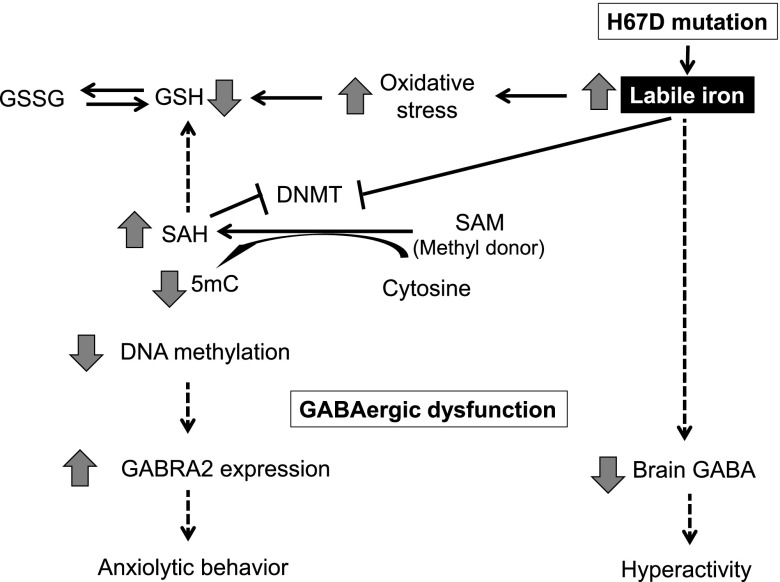Figure 8 .
Proposed mechanism of iron–redox–methylation hypothesis. Brain iron loading by H67D mutation induces emotional dysfunction by impairing GABAergic signaling. On the one hand, iron could directly alter enzyme activity (i.e., GAD) in GABA turnover, resulting in reduced GABA levels; on the other hand, excess iron perturbs DNA methylation by at least two possible mechanisms: first, oxidative stress depletes GSH and drives SAM/SAH cycle to produce more SAH, which inhibits DNMT activity; and second, iron directly inhibits DNMT activity. Both pathways impair DNA methylation capacity and up-regulate GABRA α2 receptor. Collectively, these changes in GABAergic signaling reduce anxiety and increase explorative activity in mice.

